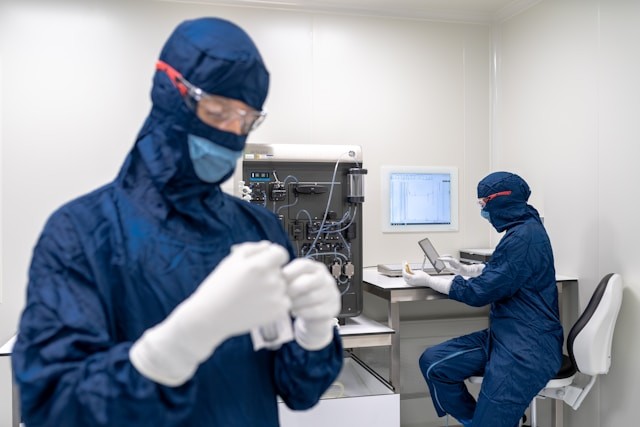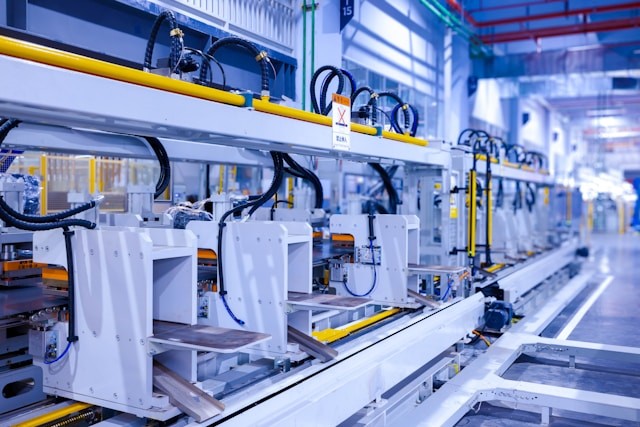Ultrasonic cleaning is a revolutionary technology used across various industries to ensure deep, non-damaging cleaning of objects. By using high-frequency sound waves, this method effectively cleans surfaces that are difficult to reach. For a more detailed overview of the capabilities of ultrasonic cleaning, you can also visit the Sinap Tec Website. In this article, we will explore the different industrial applications of ultrasonic cleaning, highlighting the sectors where this technology is particularly beneficial.
Applications in the medical and pharmaceutical industry
The medical and pharmaceutical industry requires extremely high cleanliness standards to ensure patient safety and product quality. Ultrasonic cleaning plays a crucial role in this field by ensuring the complete decontamination of surgical instruments, prosthetics, and laboratory equipment.
Cleaning surgical instruments
Surgical instruments, which are often complex and delicate, require meticulous cleaning to remove all biological residues and pathogens. The intricate design of many surgical tools means they have numerous crevices and joints where contaminants can hide. Ultrasonic cleaning uses cavitation bubbles generated by high-frequency sound waves to reach these hard-to-access areas, ensuring that even the most stubborn residues are dislodged and removed. This thorough cleaning process is crucial for preventing infections and ensuring that instruments are sterile for each use. Additionally, the gentle nature of ultrasonic cleaning prevents any physical damage to the delicate instruments, preserving their functionality and extending their lifespan.
Cleaning implants and prosthetics
Implants and prosthetics, which must be free of any contamination to prevent infections, also benefit significantly from ultrasonic cleaning technology. These medical devices often have complex geometries with fine details that are difficult to clean using traditional methods. Ultrasonic cleaning ensures that all contaminants, including microscopic particles and biofilms, are effectively removed from every surface and crevice. This is particularly important for implants, which are inserted into the body and must meet the highest standards of sterility to avoid post-surgical complications. By using ultrasonic cleaning, manufacturers and healthcare providers can maintain the sterility and safety of these critical devices.
Cleaning laboratory equipment
In pharmaceutical laboratories, equipment such as vials, pipettes, and beakers are regularly cleaned with ultrasonics to prevent cross-contamination between products. The stringent cleanliness requirements in these laboratories mean that even trace amounts of contaminants can lead to significant issues, including compromised research results and unsafe pharmaceutical products. Ultrasonic cleaning provides an efficient solution by removing contaminants at a microscopic level, far beyond what traditional cleaning methods can achieve. This ensures that laboratory equipment is thoroughly decontaminated, maintaining the integrity of pharmaceutical research and production processes.

Photo by Toon Lambrechts on Unsplash
Ensuring regulatory compliance
The ability of ultrasonic cleaning to remove contaminants at a microscopic level ensures that the stringent standards of the pharmaceutical industry are met. Regulatory bodies such as the FDA and EMA have strict guidelines regarding the cleanliness and sterility of medical and pharmaceutical products. Ultrasonic cleaning helps manufacturers comply with these regulations by providing a reliable and consistent cleaning method that can be validated and monitored. This not only ensures patient safety but also helps companies avoid costly fines and recalls associated with non-compliance.
Enhancing operational efficiency
In addition to its effectiveness in cleaning, ultrasonic cleaning also enhances operational efficiency in the medical and pharmaceutical industries. Traditional cleaning methods can be time-consuming and labor-intensive, often requiring multiple steps and manual intervention. Ultrasonic cleaning streamlines the process by providing a fast, automated solution that delivers consistent results. This allows healthcare facilities and pharmaceutical companies to reduce downtime and increase productivity, ultimately improving their bottom line. Moreover, the use of ultrasonic cleaning reduces the need for harsh chemicals, promoting a safer and more environmentally friendly approach to maintaining high cleanliness standards.
Applications of ultrasonic cleaning in the automotive and aerospace industry
The automotive and aerospace industries rely on the precision and reliability of the components used in the manufacturing and maintenance of vehicles. Ultrasonic cleaning is vital in these sectors to ensure that every part, large or small, is clean and functional.
In the automotive industry, parts such as fuel injectors, carburettors, and filters must be perfectly cleaned to ensure optimal engine performance. Ultrasonics remove carbon deposits, oil, and other contaminants without damaging the parts, thus extending their lifespan and improving engine efficiency.
In the aerospace industry, where safety and precision are of utmost importance, ultrasonic cleaning is used for critical parts like turbines, hydraulic systems, and electronic components. The ability of this technology to reach tiny crevices and cavities ensures that even the smallest particles are removed, which is essential for the proper functioning and safety of aircraft.
Applications of ultrasonic cleaning in the electronics industry
The electronics industry produces delicate and sophisticated components that require extremely precise cleaning to function correctly. Ultrasonic cleaning is particularly suited to this sector due to its ability to clean without damaging fragile components.
Cleaning printed circuit boards (PCBs)
Printed circuit boards (PCBs) are the backbone of modern electronic devices, featuring intricate pathways and components that can be easily contaminated during manufacturing. Ultrasonic cleaning is used to remove solder flux, dust, and other contaminants from PCBs. The high-frequency sound waves create cavitation bubbles that effectively dislodge and remove even the smallest particles from the surfaces and crevices of the boards. This thorough cleaning process is crucial as insufficient cleaning can lead to short circuits and malfunctions, significantly affecting the overall performance and reliability of electronic devices.
Cleaning sensors and connectors
Sensors and connectors are integral components in a wide range of electronic devices, from smartphones to industrial machinery. These components often have tiny, complex structures that are prone to contamination by dust, oils, and other environmental pollutants. Ultrasonic cleaning ensures that these contaminants are removed without causing any physical damage to the sensitive elements. By using this method, manufacturers can maintain the precision and accuracy of sensors and connectors, which is essential for the optimal functioning of electronic systems.

Photo by Homa Appliances on Unsplash
Cleaning delicate electronic components
Delicate electronic components, such as microchips and semiconductors, require a high level of cleanliness to perform reliably. Traditional cleaning methods can be too abrasive or ineffective for such sensitive parts. Ultrasonic cleaning provides a gentle yet thorough cleaning solution that can penetrate deep into the microstructures of these components, removing all traces of contaminants. This precision cleaning enhances the performance and longevity of electronic components, ensuring that they meet the high standards required for advanced technological applications.
Enhancing product reliability and lifespan
The precision of ultrasonic cleaning guarantees that all contaminants, even those invisible to the naked eye, are removed from electronic components. This meticulous cleaning process helps to prevent potential failures and ensures the long-term reliability of electronic products. By maintaining a high level of cleanliness, manufacturers can reduce the incidence of defects and increase the lifespan of their products. This not only enhances customer satisfaction but also reduces warranty claims and the associated costs.
Supporting environmental and operational efficiency
In addition to its effectiveness in cleaning, ultrasonic cleaning supports environmental and operational efficiency in the electronics industry. Traditional cleaning methods often involve the use of harsh chemicals and extensive manual labor, which can be both harmful to the environment and costly for manufacturers. Ultrasonic cleaning, on the other hand, uses water-based solutions and requires minimal manual intervention, making it a more sustainable and cost-effective option. By adopting ultrasonic cleaning, companies can improve their operational efficiency, reduce their environmental footprint, and comply with increasingly stringent environmental regulations.
To conclude of ultrasonic cleaning
Ultrasonic cleaning is a versatile and effective technology with applications in numerous industries. Whether ensuring safety and hygiene in the medical and pharmaceutical sector, enhancing the performance and durability of parts in the automotive and aerospace industries, or preserving the functionality of electronic components, this cleaning method proves indispensable. Its efficiency in reaching and cleaning the most inaccessible areas makes it a preferred solution for industries requiring high cleanliness standards. By integrating ultrasonic cleaning into their processes, companies can not only improve the quality of their products but also increase their operational efficiency.
